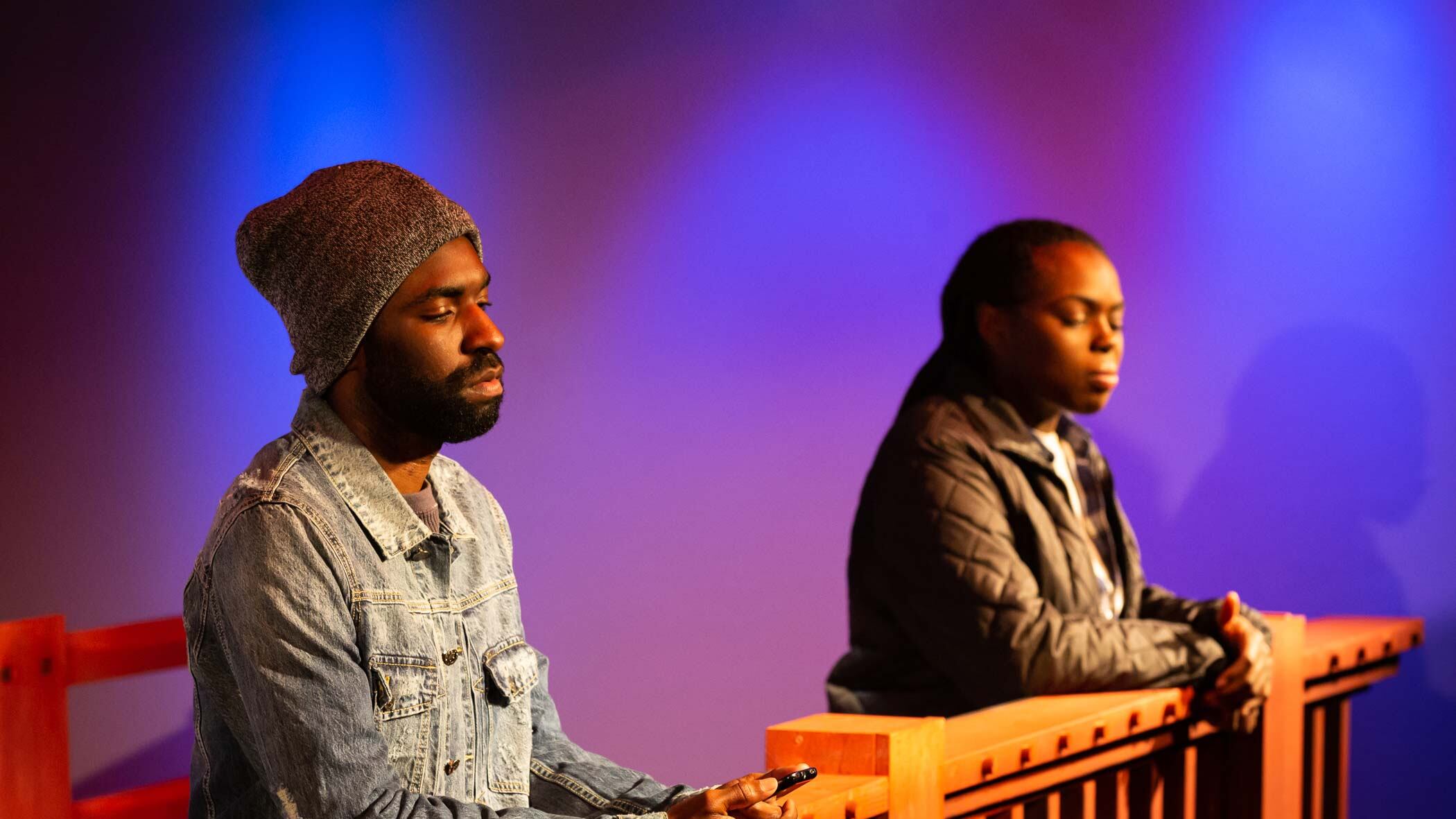Jump begins with a woman standing on a bridge, which prompts a lot of questions right off the bat. Is she going to clamber over the rust-colored railing and leap into the gorge below? Is she going to be whisked away on an It's a Wonderful Life-style odyssey? Is she merely about to take a vape break?
The answer is none of the above. Directed by La'Tevin Alexander and co-produced by Milagro Theatre and Confrontation Theatre, Jump is a play that incinerates your expectations. Without resorting to easy answers or microwaved clichés, playwright Charly Evon Simpson has constructed an honest, fierce and deeply absorbing portrait of one black family and the suicide that sends ripples of rage, regret and reckoning through their midst.
At the center of the family in question is Fay (Andrea Vernae), the woman on the bridge. While we learn plenty about the people around her—her father (Wrick Jones) is a widower who assuages his grief with pizza and beer, and her sister Judy (Jasmine Cottrell) hides her true self under a mask of high heels and cheer—Fay is elusive. We're left to wonder, for instance, why she keeps returning to that bridge, as if pulled by a magnet.
The bridge is where Fay meets Hopkins (Charles Grant), a graduate student studying anthropology who plans to kill himself, but abruptly changes his mind after he and Fay connect through their mutual zeal for Queen's "Another One Bites the Dust." Fay becomes Hopkins' self-appointed guardian angel, which fits with the unearthly quality of their interactions. That they run into each other fatefully and frequently suggests divine intervention, or at least magical realism.
Otherworldliness also pervades the scenes that chronicle Fay, Judy and their father's return to their soon-to-be-sold family home. Their conversations are repeatedly interrupted by flickering lights that only Fay notices, and the dialogue is filled with disorienting stops and starts, suggesting we are witnessing faded memories or disjointed dreams. It's clear something is going on that Fay hasn't told us about, or perhaps admitted to herself.
The revelation of that "something" in the second act feels like a smack in the face. It turns out Fay and her family's suffering runs far deeper than we ever realized, and that the reason she is compelled to help Hopkins is because she failed to help someone else. Jump, in other words, is about the tragedy of realizing you've been oblivious to the pain of people around you. When a character is questioned about how she is feeling—her answers growing more dire—it is an invitation for us to both celebrate the times we had the guts to ask and mourn the times we didn't.
Jump is rarely just painful or beautiful—often, it's both. When Fay and Hopkins' shadows are projected across the wall, they symbolize the bond between the characters and the sadness that looms over them. As Fay and Judy's father tenderly clutches Judy's violin close to his chest, we see devotion and vulnerability. And when Fay witnesses a torrent of anguish pour from beneath Judy's façade of optimism, you shiver at the magnificent realism of Vernae's and Cottrell's performances and weep for the embattled women they portray.
The play is filled with moments like that—moments that seem so personal and private you almost feel as though you shouldn't be witnessing them. Yet Jump is must-see theater. Simpson, Alexander and the cast have unleashed a work of art so emotionally involving, it makes you want to lean in, to feel, to ask and to listen. While most plays are designed simply to compel or entertain, this one has a higher calling—to save lives.
SEE IT: Jump is at Milagro Theatre, 525 SE Stark St., milagro.org. 7:30 pm Thursday-Saturday, 2 pm Sunday, through April 13. $20-$27.
